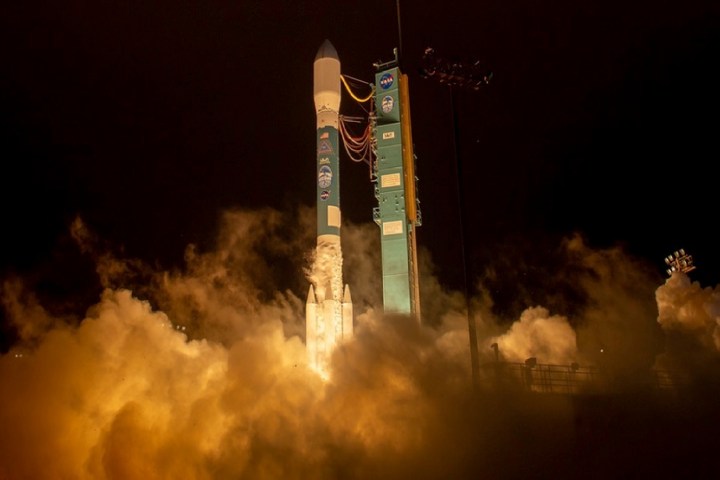
No, it’s not the villainous plan of a James Bond antagonist — although we’d totally understand if you thought it might be. On Saturday, September 15, NASA launched its most advanced space laser of all time as part of a $1 billion mission aimed at revealing the extent to which climate change has affected Earth’s ice sheet surface elevation.
The United Launch Alliance Delta 2 blasted off from Space Launch Complex 2 at Vandenberg Air Force Base in California at 9:02 a.m. ET. Its ICESat-2 payload separated from the second stage around 53 minutes after liftoff. Around 20 minutes later, this was followed by four cubesat secondary payloads.
ICESat-2 is the follow-up to a previous five-year mission, ICESat, which concluded in 2009. The first ICESat helped demonstrate the way that ice cover has disappeared from coastal parts of Greenland and Antarctica. It also made clear that the sea ice is thinning. As its successor, ICESat-2 will fill in more detail about the bigger picture by examining how ice cover changes over the course of one year.
The mission follows four of the hottest years in recent times, spanning 2014 to 2017. NASA hopes that this data will help scientists better forecast the rise of the sea level, as well as provide a better understanding of climate change and its effects.
Richard Slonaker, ICESat-2 program executive at NASA, told reporters ahead of the launch that this mission is “exceptionally important for science.”
ICESat-2 boasts a fearsome pair of lasers (the second is a backup), which will fire at a rate of 10,000 times per second. While these won’t produce enough heat to do any damage to the ice, they will enable the satellite to take incredibly detailed measurements. These measurements will be taken approximately every 2.3 feet along the path of the satellite. They will be used to check the slope and height of the ice, not just the area that it covers.
“The mission will gather enough data to estimate the annual elevation change in the Greenland and Antarctic ice sheets, even if it’s as slight as four millimeters — the width of a No. 2 pencil,” NASA said in a statement.
The ICESat-2 mission is expected to run for three years. But there is enough fuel on board to let it continue for up to a decade should mission control decide it is important to do so.
Editors' Recommendations
- How to watch NASA launch next-gen weather satellite to space tomorrow
- NASA wants to use small satellites to unlock the secrets of the universe
- NASA’s newest Deep Space Network antenna will receive laser signals from Mars


